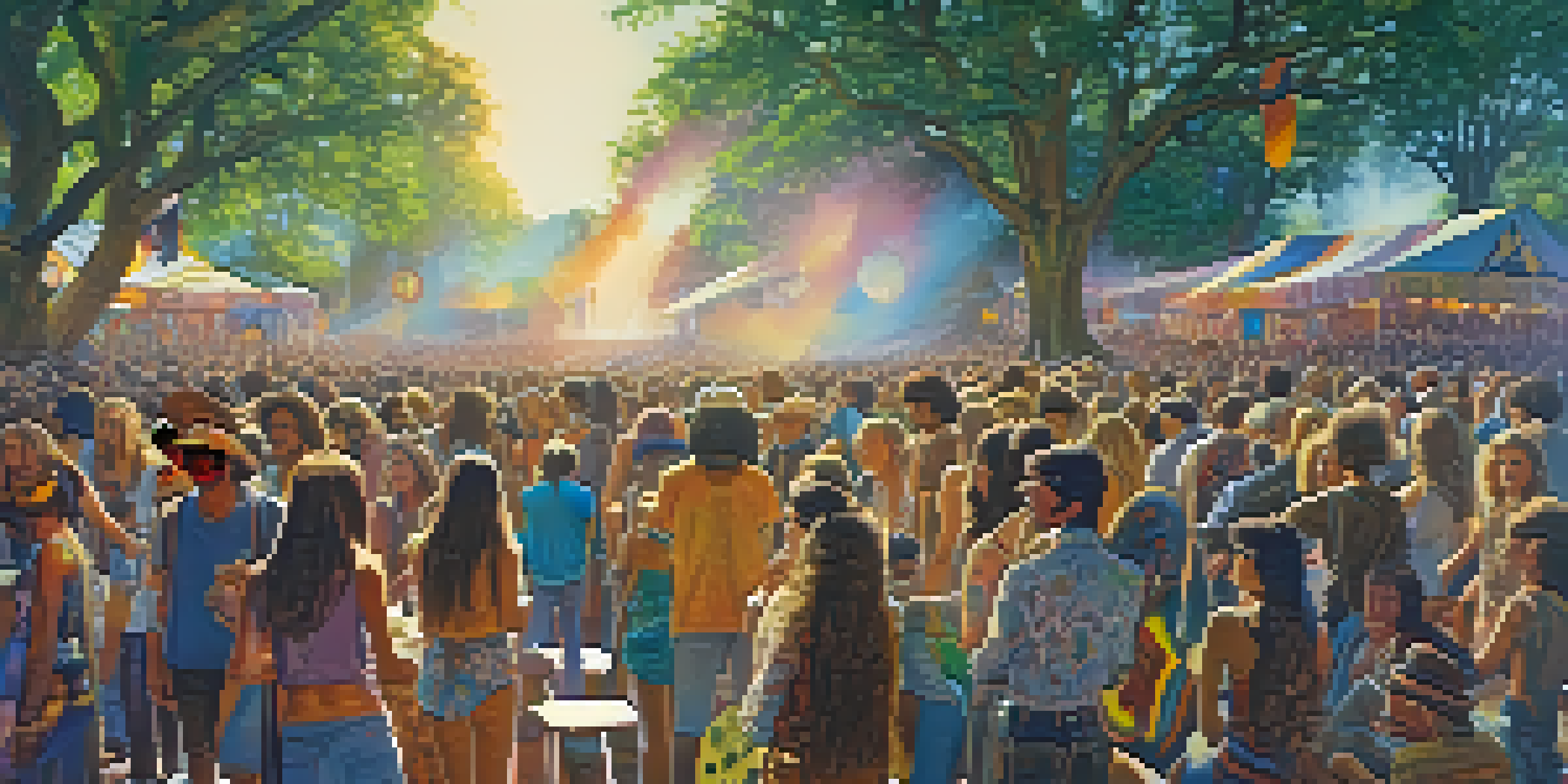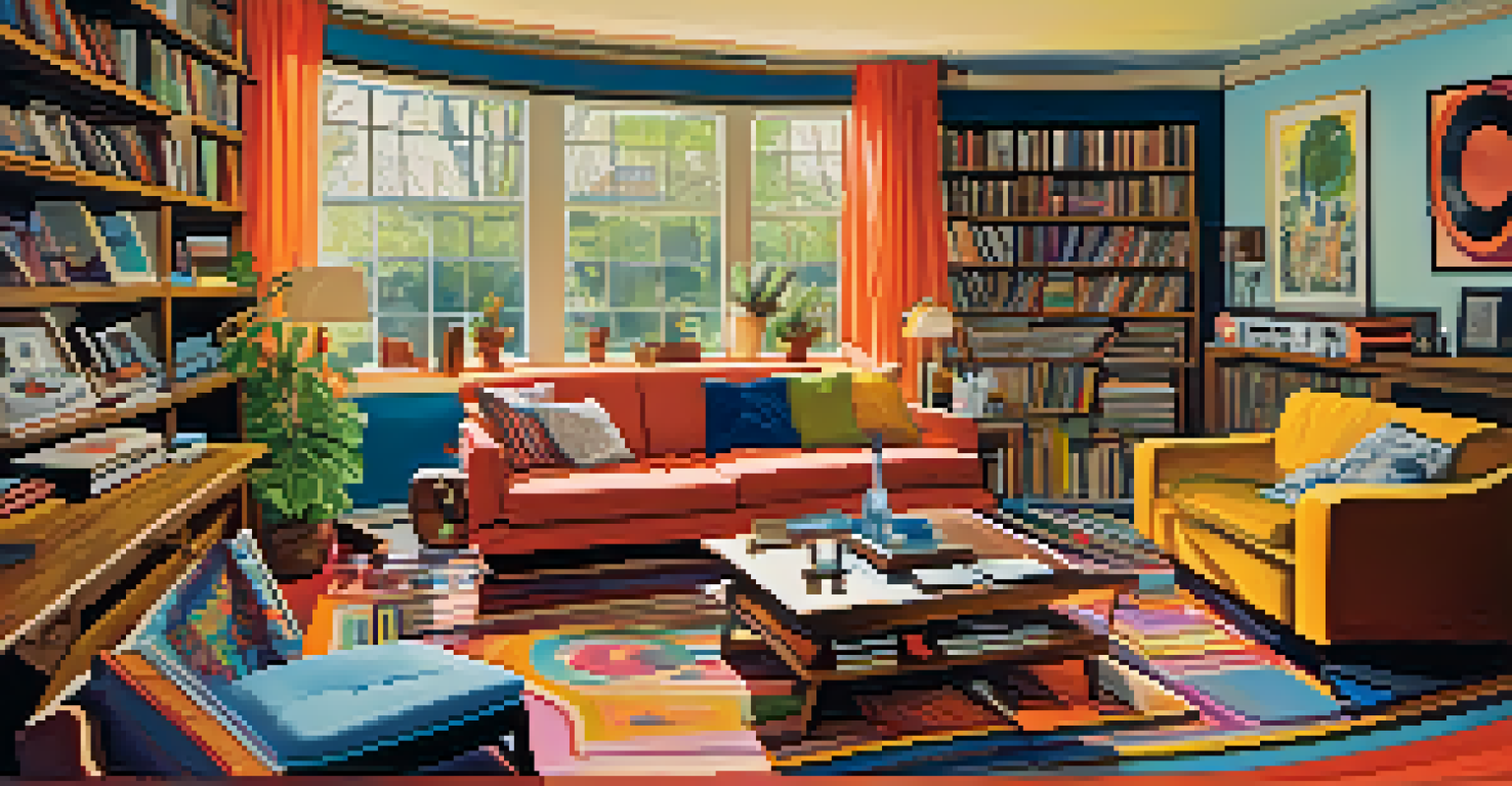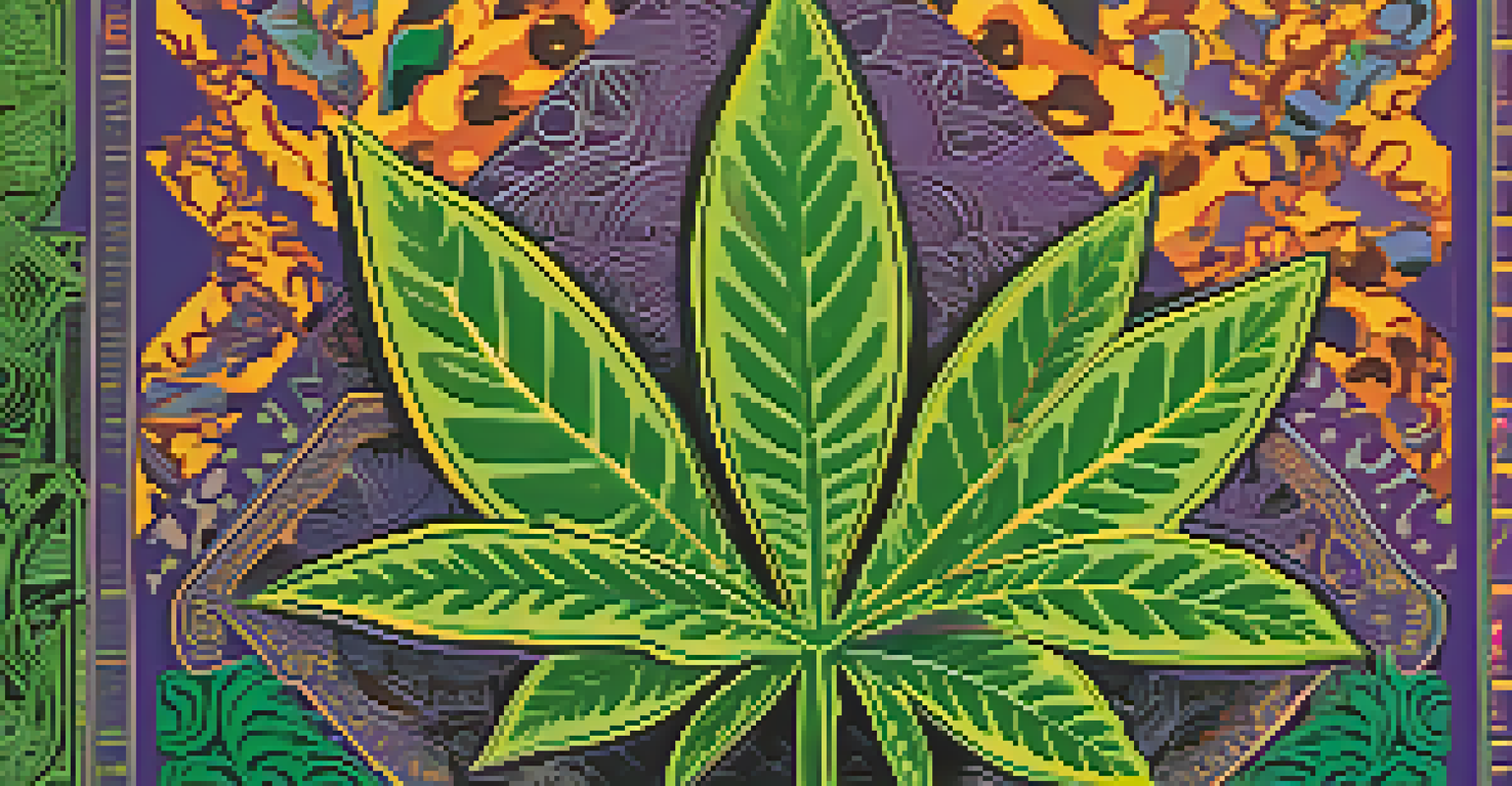The Influence of the Cannabis Culture Movement in the 70s

The Birth of Cannabis Culture in the 1970s
The 1970s marked a significant shift in societal attitudes towards cannabis. What once was seen as a taboo became a symbol of rebellion and freedom. This era saw the rise of various countercultural movements, where cannabis was not just used recreationally but became a part of the lifestyle.
When you smoke the herb, it reveals you to yourself.
As young people sought to express their individuality, cannabis emerged as a unifying element among them. It was more than just a plant; it represented a break from conventional norms and an embrace of alternative lifestyles. The music, art, and fashion of the time all intertwined with this burgeoning cannabis culture.
This cultural revolution laid the groundwork for ongoing discussions about cannabis, shaping future generations’ perspectives. It was a time when exploring new ideas and challenging the status quo became paramount, allowing cannabis to flourish in public consciousness.
Cannabis and the Music Scene of the 70s
Music played a pivotal role in the cannabis culture movement of the 70s. Iconic artists like Bob Marley and Jefferson Airplane elevated cannabis use to an art form, embedding it within their lyrics and performances. Their messages resonated with audiences, promoting peace, love, and social change.

The intertwining of cannabis and music created a vibrant community, where festivals and concerts became spaces of acceptance and celebration. These events often encouraged the use of cannabis, reinforcing its association with a laid-back, free-spirited lifestyle.
Cannabis as a Symbol of Freedom
In the 1970s, cannabis transformed from a taboo substance to a cultural icon representing rebellion and alternative lifestyles.
Through music, cannabis found its voice, fostering a sense of unity among its users. This relationship not only amplified the popularity of cannabis but also influenced the generation's cultural landscape, making it an integral part of the 70s identity.
The Counterculture and Activism
The 70s counterculture was not just about music and fashion; it also sparked significant activism. Groups advocating for the legalization of cannabis emerged, pushing back against stringent laws and societal stigma. These activists aimed to reshape public perception and challenge the legal framework surrounding cannabis.
The only thing that has changed is that the people who use it are more open about it.
The movement was fueled by a desire for personal freedom, a fundamental tenet of the counterculture ethos. With protests, pamphlets, and rallies, activists worked tirelessly to educate the public on the benefits of cannabis while deconstructing harmful stereotypes.
This wave of activism set the foundation for future movements, making cannabis reform a central issue in subsequent decades. The passion and determination of the 70s activists continue to inspire modern-day efforts for legalization and social justice.
The Role of Cannabis in 70s Literature and Art
Cannabis found its way into the literature and art of the 70s, influencing a generation of writers and artists. Beat poets, like Allen Ginsberg, celebrated cannabis in their works, embracing it as a means of expanding consciousness and creativity. This literary embrace helped normalize cannabis use within artistic circles.
Visual artists also experimented with cannabis-themed works, often reflecting the psychedelic aesthetics of the time. The vibrant colors and abstract forms in their pieces echoed the mind-altering experiences associated with cannabis, further entrenching it in the cultural narrative.
Activism Shaped Cannabis Legislation
The activism of the 70s laid the groundwork for future cannabis legalization movements, influencing public perception and legal reforms.
Through literature and art, cannabis became a metaphor for freedom and exploration. This creative expression not only validated cannabis culture but also showcased its profound impact on the artistic landscape of the 70s.
Media Portrayal of Cannabis in the 70s
Media portrayal of cannabis during the 70s was complex and often contradictory. While some films and shows glamorized its use, others perpetuated negative stereotypes and reinforced stigma. This duality created a confusing narrative that both celebrated and demonized cannabis culture.
Films like 'Easy Rider' and 'The Trip' depicted cannabis as part of a broader exploration of freedom and rebellion. Conversely, anti-drug campaigns and sensationalist news reports painted cannabis users as reckless and irresponsible, fueling public fear.
Despite this mixed messaging, the portrayal of cannabis in media contributed to a growing discourse around its acceptance. As more stories highlighted its positive aspects, the foundation for future discussions on cannabis reform was solidified.
The Evolution of Cannabis Legislation Post-70s
The cannabis culture movement of the 70s directly influenced the evolution of legislation surrounding cannabis use. Although the subsequent decades saw a crackdown on cannabis through the War on Drugs, the seeds of change were planted during this vibrant era. Activist efforts in the 70s laid the groundwork for future legal reforms.
As societal attitudes began to shift in the late 20th century, many states started to reconsider their cannabis laws. The groundwork established by 70s activists helped pave the way for the legalization movements that gained momentum in the 90s and 2000s.
Art and Music Celebrated Cannabis
Cannabis became deeply intertwined with the music and art scenes of the 70s, fostering community and creativity while normalizing its use.
Today, we see the culmination of those efforts, with many states legalizing cannabis for medical and recreational use. This evolution is a testament to the enduring influence of the 70s cannabis culture movement, as it transformed from a countercultural symbol to a recognized part of modern society.
The Lasting Impact of 70s Cannabis Culture
The legacy of the 70s cannabis culture movement is palpable in today’s society. It not only challenged societal norms but also altered the landscape of drug policy and public opinion. The movement catalyzed conversations about personal freedom, health, and social justice that continue to resonate.
Modern cannabis culture is a direct descendant of the 70s, blending elements of activism, art, and community. Today, cannabis is celebrated for its medicinal properties and its role in fostering social connections, echoing the values of the 70s movement.

As we look towards the future, the influence of the 70s cannabis culture remains significant. It serves as a reminder of the power of collective action and the importance of challenging the status quo to create lasting change.